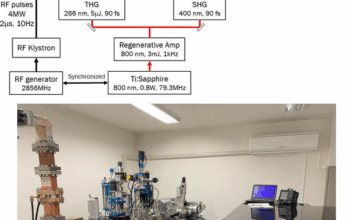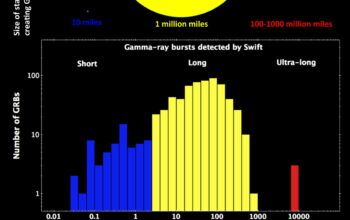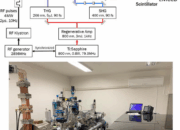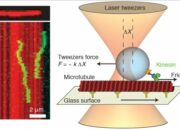The realm of chemistry is replete with intricate interactions between atoms and molecules, each interaction characterized by unique properties and behaviors. Within this domain, the concepts of covalent bonds and molecular bonds often surface, leading to the inevitable questioning: Are covalent and molecular bonds the same thing? While they are related, a nuanced understanding reveals the distinctions that underpin their differences. This discussion promises to shift your perspective on molecular interactions, distinguishing the nuanced yet significant differences between these fundamental types of bonding.
To embark on this exploration, one must first grasp the essence of covalent bonds. Essentially, a covalent bond forms when atoms share pairs of electrons, fostering a strong connection between them. This sharing occurs primarily between non-metallic elements, where the electronegativity is akin, allowing for an equitable distribution of electron density. Such bonds manifest in various configurations, from simple diatomic molecules like hydrogen (H2) to the complex structures seen in organic compounds.
Diving deeper, these bonds can be characterized further. Single, double, and triple covalent bonds depict the varying degrees of electron sharing—each arrangement offering divergent physical and chemical property implications. A single covalent bond, wherein one pair of electrons is shared, exemplifies a robust yet simple connection. Conversely, double and triple bonds signify increased electron sharing, which in turn augments their energy and stability. This hierarchy of bonding illustrates a fundamental principle in chemistry: the greater the number of shared electrons, the stronger the bond formed.
Transitioning to molecular bonds, it becomes essential to delineate what comprises this term. A molecular bond often refers more broadly to the attractions that occur between discrete units of molecules in the aggregate state. Thus, when addressing molecular bonds, one is generally referring to intermolecular forces that govern the behavior of molecules in solids, liquids, and gases. These forces—such as hydrogen bonding, dipole-dipole interactions, and London dispersion forces—play critical roles in determining the physical properties of substances.
Examining this distinction further elevates our understanding. While covalent bonds create the very backbone of a molecule’s structure through electron sharing, molecular bonds govern how these molecules interact with one another when forming solids and liquids. For instance, water (H₂O) exhibits covalent bonds that hold the hydrogen and oxygen atoms together. Yet, it is the intermolecular forces—predominantly hydrogen bonding—that dictate water’s unique properties, such as its relatively high boiling point and surface tension. This distinction underscores the interplay between intramolecular and intermolecular forces, revealing a rich tapestry of chemical interactions.
The relationship between covalent and molecular bonds also encompasses the concept of polarity. Covalent bonds can produce polar or nonpolar molecules, a facet chiefly influenced by the electronegativity differences between the bonded atoms. For example, in a water molecule, the oxygen atom’s higher electronegativity leads to an unequal sharing of electrons, resulting in a polar molecule. This polarity enhances intermolecular attractions, further distinguishing molecular bonds by their strength and characteristics influenced by underlying covalent structures.
Moreover, the implications of these distinctions resonate through various scientific disciplines. In biochemistry, for instance, the formation of proteins involves a meticulous choreography of covalent bonds creating amino acid chains, while intermolecular interactions dictate their three-dimensional configurations crucial for function. The nature of these molecular bonds can elucidate phenomena such as enzyme-substrate binding, highlighting the bridge between fundamental chemistry principles and biological processes.
The exploration of covalent and molecular bonds also extends to materials science. The properties of compounds—such as melting and boiling points, solubility, and electrical conductivity—are inextricably linked to their bonding types. Polymers, for instance, often exhibit varying characteristics depending on whether they are held together by covalent networks or intermolecular attractions. Understanding these differences can lead to advancements in developing new materials with tailored properties for specific applications.
In the context of nanotechnology, this interplay between covalent and molecular bonding reveals further dimensions. The manipulation of these bonds at the nanoscale level can yield innovative materials with extraordinary physical and chemical properties. For example, engineers can alter molecular interactions to fabricate nanostructured materials exhibiting enhanced strength or altered electrical characteristics, significantly influencing the future of technology.
Bringing this discussion to a conclusion invites contemplation on the broader implications of understanding these bonds. An appreciation for the difference between covalent and molecular bonds not only equips us with a more profound respect for chemical principles but also enhances our ability to innovate and refine various scientific fields. Covalent bonds create the structures, while molecular bonds elucidate and govern their interactions, painting a complex yet beautiful picture of chemical connectivity.
Thus, the question persists: Are covalent and molecular bonds the same thing? The answer, intricately layered, reveals that while they are inexorably linked, they serve distinct roles in the vast narrative of chemistry. By expanding our inquiry into these foundational concepts, we unlock a deeper understanding of not just atomic interactions, but of the very fabric that constitutes matter itself.










